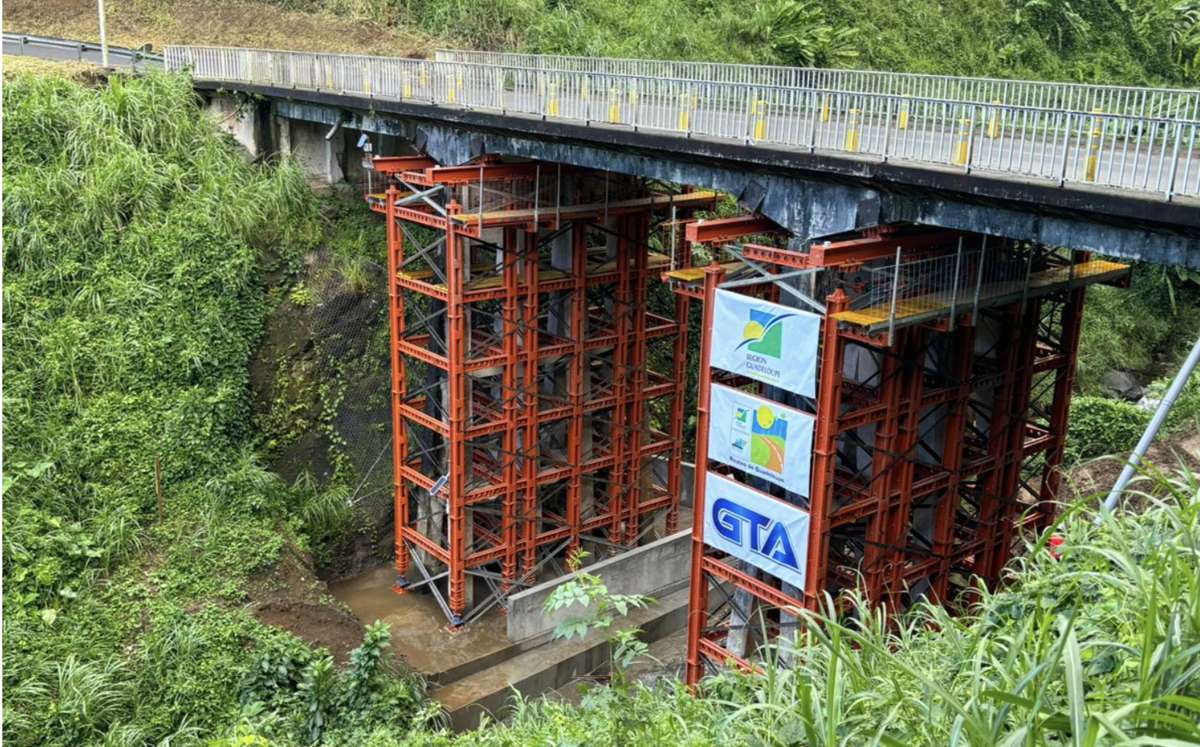New research shows concrete bridges are stronger than previously thought
PhD student Thomas Westergaard Jensen is making bridges collapse. But there is a point to the destructive behaviour; to test the load-bearing capacity. The preliminary research shows that the bridges are stronger than previously thought. This could save society both time and money.
Every time particularly heavy shipments, which are becoming more and more common, want to use the Danish road network, they have to apply for a permit from the police. Sometimes the permit is granted on condition that they reduce speed considerably; at other times, they have to find a different route. Either way, the process can be both inconvenient and time-consuming.
To contribute to a solution, Thomas Westergaard Jensen embarked on an industrial PhD which involves full-scale load capacity tests on concrete bridges that have been scheduled for demolition.
The project is being run in partnership between the Danish Road Directorate, the Technical University of Denmark (DTU) and COWI, and so far it has taken in a concrete bridge on Route 18 at Herning in Denmark, which was stressed with 460 tonnes of steel sheets and jacks, after which it started to crack.
“Preliminary testing of the Danish Road Directorate’s concrete bridges suggests that their real carrying capacity is much higher than assumed by the calculation models that have been used, even when taking account of the stipulated safety margins,” says Westergaard Jensen, “If this holds for other types of bridge in the research project, there could be a lot to gain in terms of extending the limits for unusual loads and so reducing the resources needed for special permits and for demolishing or strengthening existing bridges.”

Calculation models to be put to the test in reality
The aim of the overall research programme is to gather unique empirical data and develop a methodology for more precise calculations of load-bearing capacity, to give the Danish Road Directorate a more reliable basis to decide whether a bridge should be upgraded to handle heavier traffic or whether it needs to be strengthened or demolished.
“It is a huge privilege to be able to test calculation models that form the basis for many of the Danish Road Directorate’s decisions. Many of these calculation models have been developed on the desks of engineers like myself. The models are typically tested in laboratories with simulated structures which are often scaled down to a smaller size. But they are almost never tested on actual structures in the real world, as we are able to do here,” says Westergaard Jensen, adding, “It is particularly interesting because the aim of the research is so clear and practical: to develop a more precise calculation model to allow us to give the customer a firmer basis for decisions on the bridges on our road network.”
This industrial PhD project is part of an ambitious research programme encompassing 3 PhD projects, 2 post-doctoral projects and a large number of graduate projects. The programme is a collaboration between the Danish Road Directorate, the Civil Engineering Institute at the Technical University of Denmark (DTU BYG) and COWI.
The Danish Road Directorate owns around 2,000 bridges. It has not yet been decided how many bridges should be subjected to full-scale testing.















